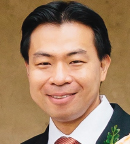
No safety outbreaks among generic oncology drugs were reported in developed countries. For developing countries, oversight is less intensive, and concerns around drug safety still exist.— Y. Tony Yang, ScD, and colleagues
Tweet this quote
In an article in The Lancet Oncology, Y. Tony Yang, ScD, of George Mason University, Charles L. Bennett, MD, PhD, MPP, of the University of South Carolina and colleagues from the United States, Europe, and Japan examined clinical, policy, safety, and regulatory considerations for generic oncology drugs internationally.1 Available data do not identify safety concerns in the United States, Canada, the European Union (EU), or Japan, regions where drug regulations and enforcement are strong. However, manufacturing problems for generic drugs have been identified in India, which supplies 40% of all generic pharmaceuticals used in the United States, leading to increased inspections and communications by the U.S. Food and Drug Administration (FDA) in an effort to improve oversight and enforcement.
Bioequivalence Testing
As noted by the authors: “Bioequivalence testing is the cornerstone of regulatory pathways for generics.” Principles of bioequivalence in the United States, Canada, the EU, India, and Japan require a 90% success rate for bioavailability properties (eg, the rate and extent of absorption) in falling within 80% to 125% of values for branded drugs. In practice, however, many details regarding requirements for the design, conduct, and assessment of bioequivalence studies are without international consensus; thus, many regions have issued their own guidelines. In China for example, generic drugs are often compared with other registered products that are also generic formulations; until 2016, testing for bioequivalence required only in vitro testing. In India, strict bioequivalence limits have been proposed for some generic drugs with narrow therapeutic indices, although specific ranges have not been published.
Safety Review
As part of their examination of the issue of generic drug safety, the authors reviewed information about toxicity and adverse events in regulatory databases in Japan and the United States and published literature in English or Japanese for branded vs generic formulations of one agent in each of the classes of heavy metal drugs (cisplatin), targeted agents (imatinib), and cytotoxic agents (docetaxel). An example of the findings on docetaxel include wide variations in the quality of analysis of 31 generic docetaxel formulations and branded docetaxel at 20-mg and 80-mg formulations in 14 countries in Asia, Africa, the Middle East, and Latin America. A total of 10 generic versions had expected levels of docetaxel (90%–110%), 21 contained less than 90%, and 11 had less than 80% of the active ingredient. Some generic formulations also had higher levels of impurities than branded formulations.
Update on Global Generic Drug Safety
- Few safety concerns over generic formulations were identified in the United States and other regions with strong regulations and enforcement.
- Safety concerns persist for generic oncology products consumed in developing countries with less stringent manufacturing regulations and enforcement.
Studies of cisplatin showed higher rates of grade 2 or 3 increases in serum creatinine and higher rates of grade 3 or 4 leukopenia with generic vs branded formulations. Several reports on imatinib indicated similar toxicity and outcomes of treatment with branded vs generic formulations; however, one report from Iraq indicated loss of hematologic response and greater toxicity in patients with chronic myeloid leukemia switching from branded to generic drug.
Manufacturing Standards
Improved manufacturing standards for generics are essential. In 2014, the FDA issued 18 warning letters to overseas drug manufacturers, including 6 to China and 6 to India. The FDA performed 111 inspections in India in 2015, compared with 98 in 2011 and 59 in 2009. The Central Drugs Standard Control Organization (CDSCO) of India is expected to start unannounced inspections at manufacturing sites in India. The FDA is increasing office staff in India to 23 and in China to 35, with the aim of increasing inspections for pharmaceuticals exported to the United States and improving Central Drugs Standard Control Organization compliance with FDA regulations.
As of 2015, more than 80% of all active pharmaceutical ingredients of drugs sold in the United States are manufactured abroad. The FDA banned generic medications manufactured at several Indian sites pending improvements and fined foreign makers for selling adulterated drugs in the United States. It is hoped that improved collaboration between the FDA and the Central Drugs Standard Control Organization will address manufacturing and safety concerns; however, the Central Drugs Standard Control Organization has only roughly 300 employees, suggesting that improvement will take time.
In 2015, the European Medicines Agency recommended that member countries withdraw hundreds of generic medications tested by one Indian contract research organization due to concern over data quality. Overall, the quality concerns raised, for example by the study of docetaxel mentioned previously, support concerns over poor quality generics in developing regions. However, developed countries must also continue to improve oversight of generic drug manufacture and safety.
Regulatory Reports From Japan and the United States
The authors review of regulatory reports identified 13 studies from Japan showing increased toxicity with generic formulations vs innovator oncology drugs. In addition, almost half of 20 reports on cisplatin indicated increased toxicity for generic vs branded formulations.
Given concerns that the methodology of the studies involved prevented direct comparisons, the National Institute of Health Sciences in Japan performed purity tests with six innovator and generic cisplatin formulations. No substantial purity differences were found, suggesting generic cisplatins in Japan appear to be safe.
FDA data for 2012 to 2016 focused on class I recalls (the most serious, requiring immediate action because of possibilities of serious health problems or death) and class II recalls (requiring immediate action because use of the product could cause temporary or reversible health problems). There were 17 class I recalls and 62 class II recalls. A total of 4 class I recalls were made for 2 brand name products and 13, for generic products. One class II recall was made for branded temozolomide.
The authors concluded: “No safety outbreaks among generic oncology drugs were reported in developed countries. For developing countries, oversight is less intensive, and concerns around drug safety still exist. Regulatory agencies should collaboratively develop procedures to monitor the production, shipment, storage, and post-marketing safety of generic oncology drugs. Regulatory agencies for each country should also aim towards identical definitions of bioequivalence, the cornerstone of regulatory approval.” ■
Disclosure: The work was funded by the National Cancer Institute, American Cancer Society, South Carolina SmartState Program, and a grant from Doris Levkoff Meddin to the South Carolina College of Pharmacy Center for Medication Safety and Efficacy. For full disclosures of the study authors, visit www.thelancet.com.
Reference




